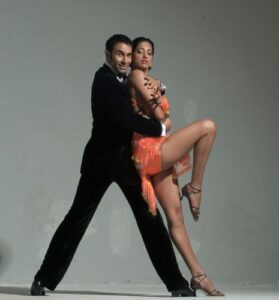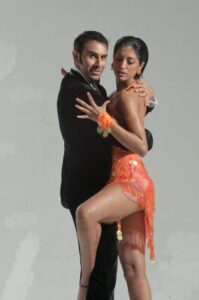THE BUSINESS OF DANCE

Most of us love to dance or have a secret desire to dance like Hrithik Roshan or Madhuri Dixit, but have you ever given a thought that ‘Who is a dancer?’ In its simplest form, dancer is someone who moves their body to the rhythm of music, sounds or just a pulse inside them. This obviously is a simplistic definition, but in dance, the body is an instrument that allows someone to “show” rhythm, “show” music, “show” style and “show” spirit. It is an all-encompassing art form that requires an intelligence of the body, mind and spirit.
What does it take to become a professional dancer? A question I’m asked quite often by wide-eyed dancers, in love with the feel of dance, the art of dance, and hoping to move into the profession of dance. This is a different question. Dance, just like any other profession you get paid for, requires a certain amount of expertise, personality, drive and luck to succeed.
This question implies that one wants to become successful at what they do. Success in the “Dance Business” has many colors depending on the goals of the individual dancer. Do you want to be a Broadway dancer, Bollywood dancer, Ballet dancer, TV/Video dancer, Modern contemporary dancer, classical dancer or even a GoGo dancer? All require a certain expertise. Some of the techniques will intersect and some will be entirely specific to the form.
To start with, the “Dance Business” is a business. This means that it requires other skills beside just technique, style or look. In this business, one must be the CEO or director of their own life in dance, even though one is often taught to “be quiet and follow orders.” Whether one’s decision is to be a classical dancer or Latin ballroom dancer, one must be his/her own PR, Marketing and Sales Director, Technical Director, Accountant and Agent/Manager.
All of these skills, if learned well, will be transferable into civilian life. All of these skills can also allow one to become a “professional.” When you can ask a simple question, “What is the budget for individual dancers in this project?” Any head of a production company or dance company will know that they must come up with a fee for the job, or give you a good reason why there is no fee involved. It takes courage and experience to ask questions in a professional and non-threatening way.
When you begin to have some modicum of success with smaller projects, often you begin to look for an Agent to do one part of your job. But notice, I said “part.” The Agent’s job is to book as many dancers per day, week, month, as they can. The reason? They are in their business to make a commission. If you do not “stand out” in any particular way, they may not even consider you as part of their “stable.” Or if you do not keep up your technique, your “look,” or give them the materials they need to sell you, you disappear to them, which means you will not be called for the next audition or be considered for the jobs that come up.
This does not mean you are a failure! It may mean that you don’t have enough experience, you need more technical training, you may not be the kind of client this agent knows how to book. It does mean that you need to search for a good fit for you.
In sales the life-blood is to be able to handle the rejection that is inherent in the field itself. If one must be a dancer, it is necessary to know that inherent in the business is rejection, perfectionism, beauty, spirit, and if one is a working dancer, an exciting and even boring field of endeavor. It is a hologram of creativity, possibilities and tests that make you stronger, more brilliant, more able and even at times more bitter than most any other field of endeavor. It is a field that challenges every fiber of you.
I believe that to be good at the dancing business one should learn from nature, from birds, five birds in particular. First a Crow – if one notices a crow, it quickly takes his bath and flies off (Kaka Snanam) which means as a dancer keep your personal things (referencing to crow’s bath) short and pay more attention to work. Second a Crane – (Bakul Dhayanam) this bird stands on one foot with a lazer sharp focus to catch it’s prey, similarly a dancer should have high level of concentration to achieve their goals.
Third is a Woodpeacker – this bird sits for hours and ends in one place and keeps pecking on and on to make a hole in the wood, similarly in the dance world, a dancer needs to be persistent and keep working on and on not for a few years but for the entire life. Forth a Sparrow is called (Alpahari) means one who take care of the food it eats, remember dance is a visual medium so being fit and looking smart with an enigmatic personality is as important as the art of dance itself. And lastly the fifth an Eagle – this birds flies the highest but its eyes are always on the ground, so as a dancer be grounded remember the business of dance will show you the heights of success, so keep you head on your shoulders and let praises and accolades not hit you in the head. Keep in mind a dancers dances on the ground not in the clouds so be humble always.
We will continue to examine the “game” of the business. Remember in this game of dancing business one has to have it all to succeed right from looks to body to technique to style to the works. So get it all, be your boss and Happy Dancing.
Sandip Soparrkar holds a doctorate in world mythology folklore from Pacific University USA, an honorary doctorate in performing arts from the National American University, He is a World Book Record holder, a well-known Ballroom dancer and a Bollywood Choreographer who has been honored with three National Excellence awards, one National Achievement Award and Dada Saheb Phalke Award by the Government of India.
He can be contacted on [email protected]



